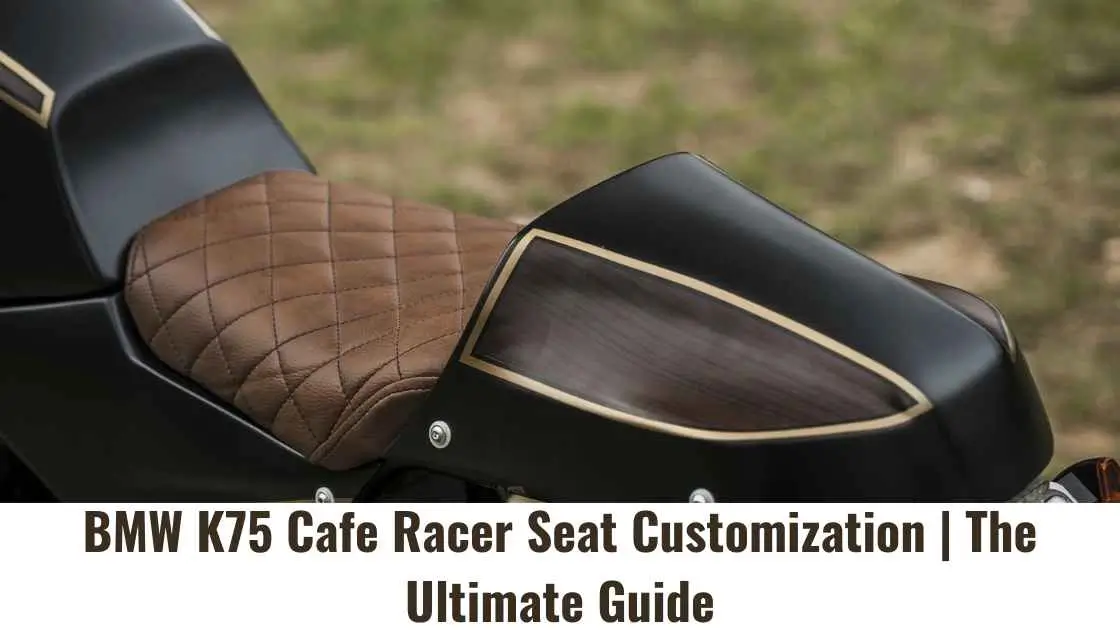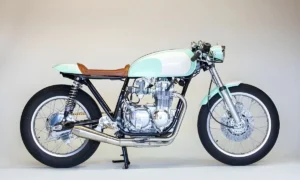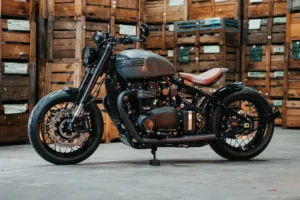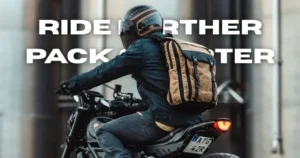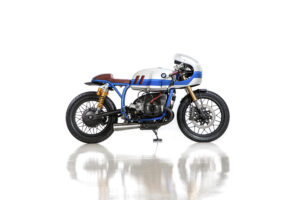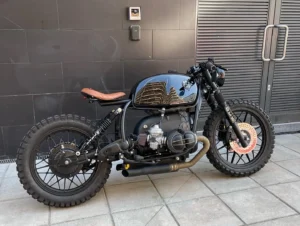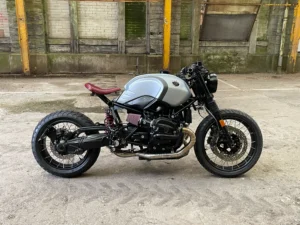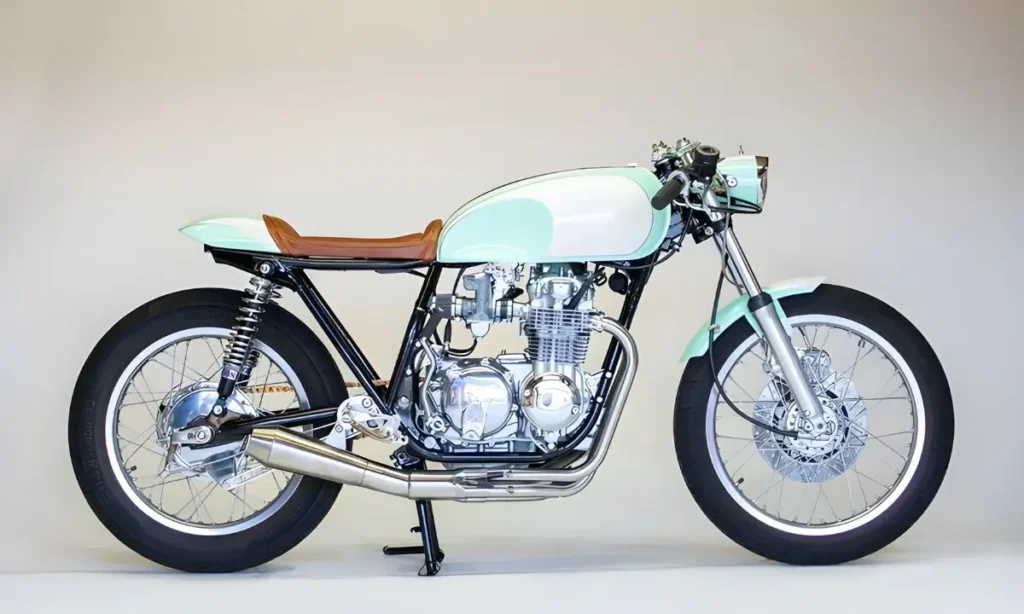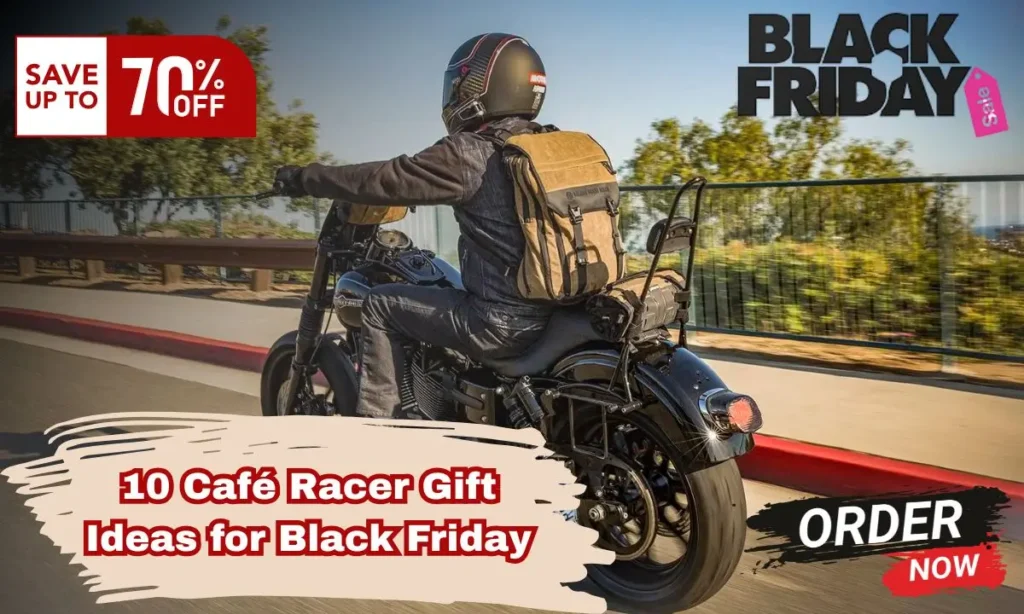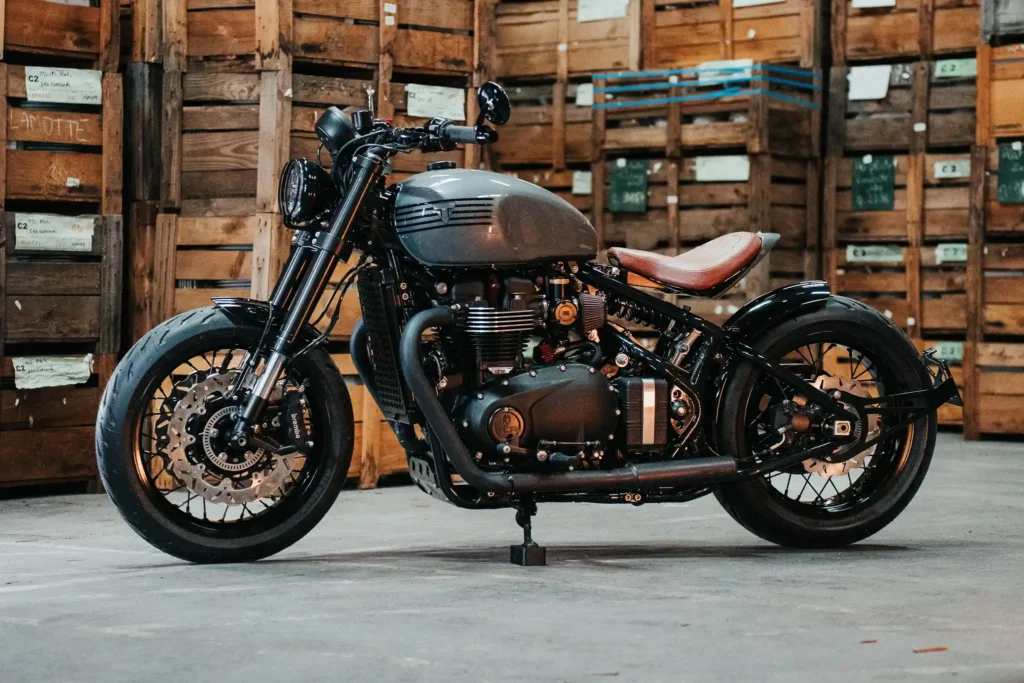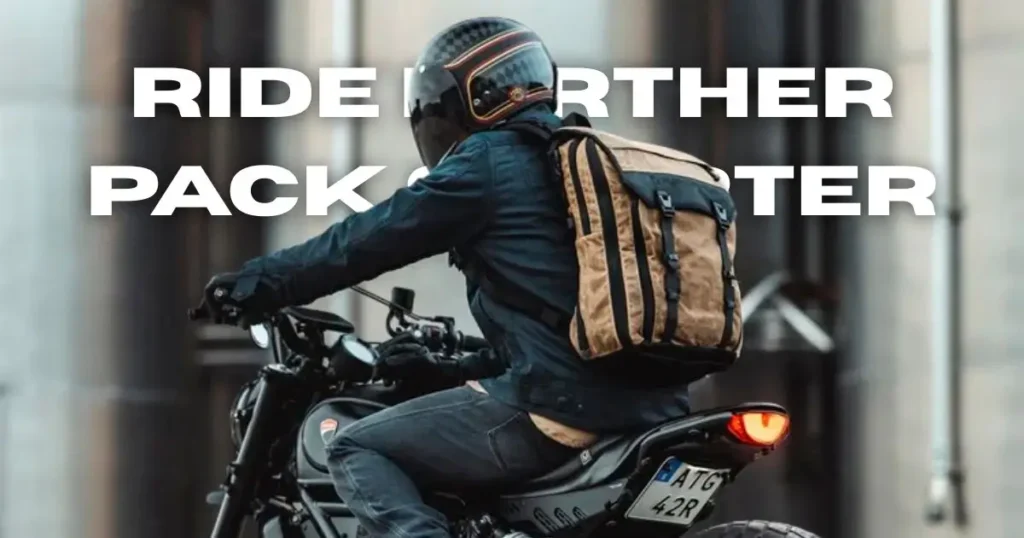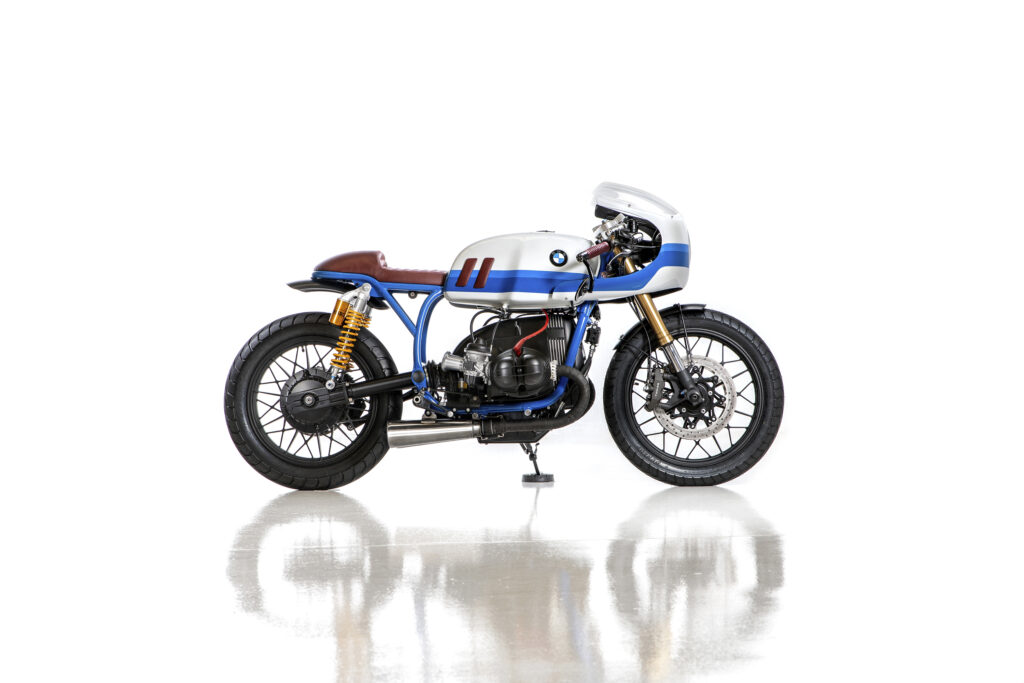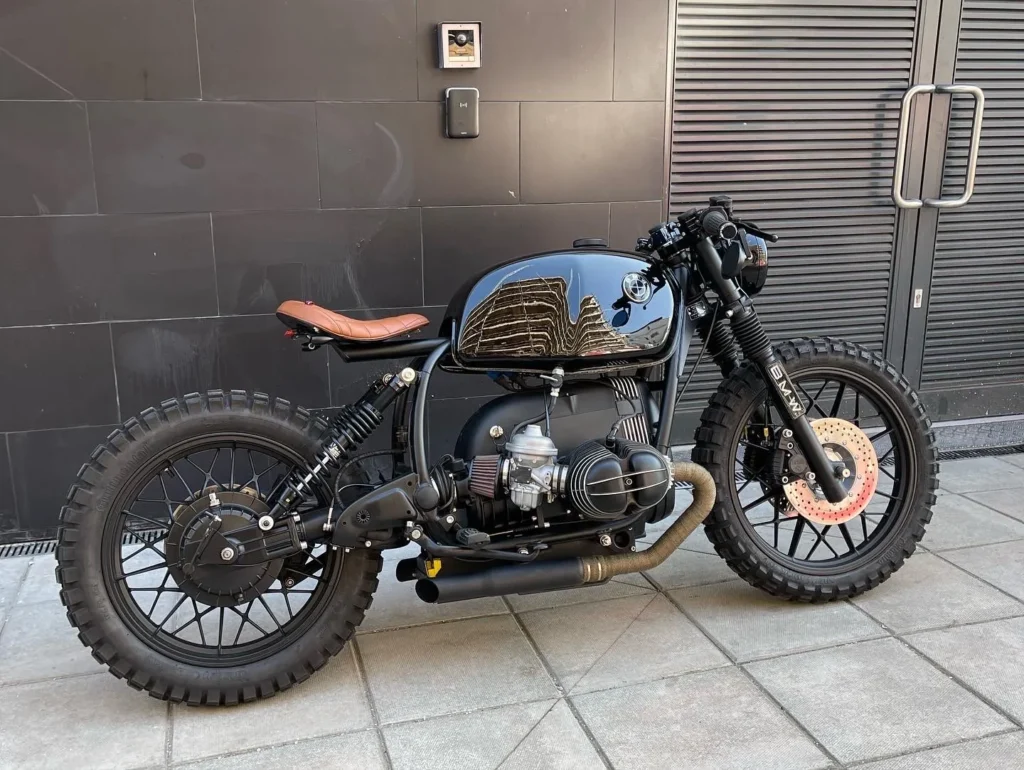Table of Contents
ToggleIf you are reading this, you are probably thinking about turning a BMW K75 into a Café Racer. This is a great choice! I have worked on motorcycles for years, and the BMW K75 is a perfect base for Café Racer projects. It is reliable, simple, and has sleek lines. This makes it a good bike for customization, especially for the BMW K75 Cafe Racer Seat Customization. In this post, I will show you how to customize the K75 Café Racer seat. We will cover everything, from choosing the right style and materials to modifying the frame.
For Café Racer builds, the seat is more than just a place to sit. It defines the bike’s shape. A good seat can change how your K75 looks and feels. Whether you want a sleek look or a rugged style, the seat will play a big role in shaping your bike’s character.
Why Customize the Seat?
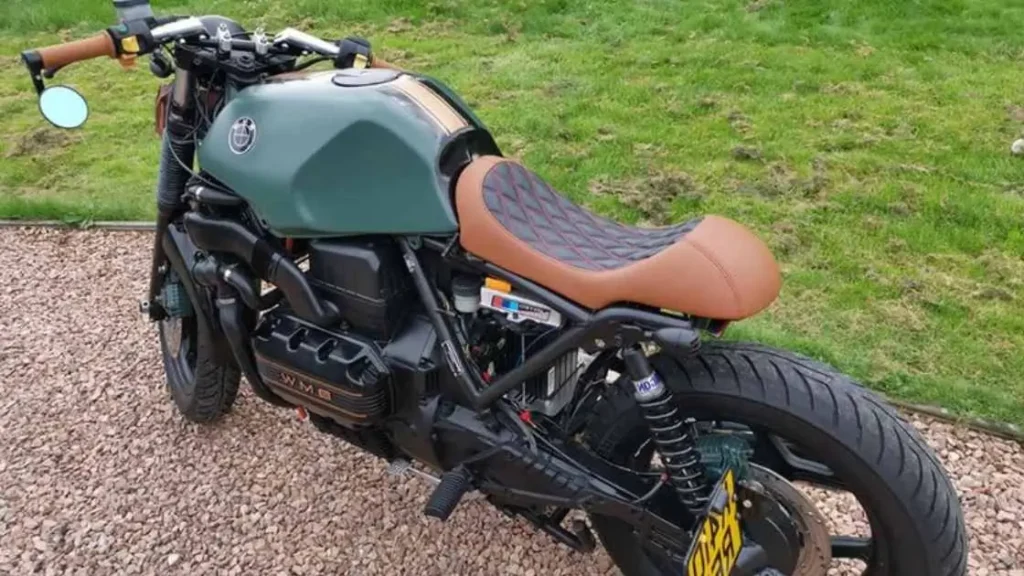
Why is the seat so important? Let me explain. First, it’s about comfort. The K75 has a bulky stock seat. This seat is good for long rides, but not for the minimal Café Racer style. A custom seat makes it more comfortable. It also matches the Café Racer look by blending style and comfort.
Next, let’s talk about style. Café Racers are known for their cool design, and the seat is a big part of that. You can choose a flat seat for a simple look or a hump-back seat for a vintage style. You can also use different materials and finishes to make your bike unique.
Now, let’s get into how to pick the right seat for your K75 Café Racer.
When you customize a Café Racer, the seat is one of the first things people notice. It is an important part of the bike’s look and feel. The BMW K75 has a stock seat that works but is not sleek like a Café Racer seat. So, why upgrade it? Here are the main reasons to consider a new seat.
Ergonomics and Comfort
First, let’s talk about comfort. The K75 seat is big and soft. It works well for long rides, but it is also bulky. For a Café Racer, that’s not ideal. The Café Racer has a more aggressive riding position. This means your body leans forward. You need a seat that helps you lean forward but still feels comfortable. This is true even if you ride for more than short trips.
A thinner seat is better for this style. It looks sleek and helps you lean into the bike. You won’t feel like you are sitting on a big couch.
Aesthetic and Style
Next is style. Café Racers are all about clean lines and simple looks. Your seat can make or break this. The bulky stock seat is not good for a Café Racer. A custom seat can give you the sleek look you want.
If you want a vintage racer style, choose a hump seat. For a stripped-down Brat style, go with a flat seat. It should have just enough padding to stay comfortable but still look simple.
Functionality
Finally, let’s talk about function. A good custom seat does more than look nice. It makes your ride better. Changing the seat can improve your riding position, balance, and control. Whether you ride in the city or on twisty roads, a custom seat can make a big difference.
Types of Seats for BMW K75 Café Racer

Now that we know why customizing your seat matters, let’s look at the types of seats for your K75 Café Racer.
Flat Brat Style Seats
If you like the Brat style—a popular Café Racer type—then a flat seat might be right for you. Flat seats give your bike a simple look and remove any extra bulk. They are a great choice if you want a clean design. But, flat seats can be tough for long rides. Comfort is traded for style here. So, if you plan to ride longer, consider thicker foam or a gel insert.
Café Racer Hump Seats
If you like a vintage racer look, the hump seat is a classic choice. Also called a “bubble seat,” it has a raised back. This makes it look fast and helps hold you in place during spirited rides. It is a great option if you want a traditional Café Racer style. Plus, the hump can sometimes hold small items like tools or gloves.
Custom Scrambler Seats
If you want a mix of Café Racer and Scrambler, you should consider custom scrambler seats. These seats are thicker and have more padding. This makes them better for off-road or rough roads. They offer a good balance of comfort and style. This is great if your bike is not just for the city.
Seat Materials and Upholstery
Picking the right materials for your seat is as important as the style. The main choices are leather and vinyl. There are also other materials to think about, depending on your budget and use.
Leather vs. Vinyl
Leather is the top choice for Café Racer seats. It looks great, ages well, and adds class to your build. The downside is that it needs more care. You must condition leather often to stop it from cracking, especially if your bike is outside a lot.
Vinyl, however, is cheaper and easier to care for. It may not feel as nice as leather, but it can still look good, especially if you choose high-quality vinyl. Vinyl also resists water and sun damage better, making it a good choice for riding in all weather.
Foam Density
Let’s talk about foam. The type of foam you pick for your seat affects comfort. Most Café Racer seats use closed-cell foam. It holds its shape well and gives better support for long rides. You need foam that is firm but also soft enough to absorb road bumps.
Some builders add memory foam or gel inserts for more comfort. This is helpful for flat seats with little padding. The goal is to balance comfort with style.
Customization Options
This is where you can get creative. You can pick from different textures, colors, and stitching styles to make your seat unique. Quilted or diamond stitching adds a retro look to your Café Racer. Smooth surfaces give a modern feel. Don’t be afraid to try different finishes to match your vision for the bike.
Frame Modifications for Seat Installation
Now, let’s talk about the technical part. If you are adding a custom seat to your K75, you may need to change the frame. Don’t worry—it’s not as hard as it sounds. With the right tools and some patience, you can make these changes without much trouble.
Cutting the Rear Loop
Most Café Racer seats need you to cut the rear loop of your bike’s subframe. This is the round part of the frame behind the seat. Cutting this makes a shorter, compact profile that fits the Café Racer style. The key is to measure twice and cut once. You don’t want to cut off too much!
After cutting, cap the frame ends to prevent rust and keep it strong. Some builders use rubber or plastic caps, while others weld metal caps.
Subframe Adjustments
If you are adding a flat or custom seat, you may need to adjust the subframe. This could mean adding or removing brackets to get the right mounting points. If you are not comfortable with welding, take this step to a professional.
Bolt-on vs. DIY Frames
Some aftermarket seats are bolt-on solutions. They come with all the brackets and hardware you need. This is a good choice if you do not want to make major frame changes. But if you want a custom look, you will need to make your own mounting system. This may mean welding new brackets or changing the old ones.
Step-by-Step Guide to Installing a Custom Seat
Alright, we have covered seat types, materials, and frame changes. Now, it’s time to get into the installation. If you are like me, this hands-on part is both fun and a bit scary. But don’t worry—I will guide you through it. Be patient, stay focused, and work carefully. You will finish the job and feel proud of it too.
Here is a step-by-step guide to install a custom seat on your K75 Café Racer.
Step 1: Measuring the Frame and Seat Pan
Before you start cutting or drilling, the first step is to measure. Measure the length and width of the seat pan, then compare it to your bike’s frame. Make sure the seat fits well, especially if you are cutting the rear loop. Precision is key here, so take your time.
If you want a shorter, compact look, measure how much of the rear frame you need to remove. Once you have these measurements, you will know where to cut.
Step 2: Prepping the Frame
Next, get your bike ready. If you need to cut the rear loop, use a metal cutting tool like a hacksaw or angle grinder. Make sure you wear safety gear—gloves and goggles are a must.
After cutting the frame, file down the rough edges. Cap the ends with rubber caps or weld metal caps to keep the frame from rusting. Do not leave exposed metal. It can rust and weaken the frame over time.
Step 3: Installing the Seat Mounting Hardware
Most aftermarket seats come with their own hardware. If you are building or modifying a custom seat, you may need to make your own mounting points. You might need to drill holes in the seat pan to align with the bike’s frame. If you are doing this yourself, install Rivnuts or threaded inserts. These give solid anchor points for bolting the seat down.
Make sure everything lines up before drilling. It is a good idea to mock up the seat to check that it looks right and feels comfortable before securing it.
Step 4: Securing the Seat to the Frame
Now it’s time to bolt the seat down. Whether you use pre-installed brackets or custom points, make sure the seat is tight. You don’t want any wobbling when riding. Check all bolts and fasteners for tightness. If needed, use thread-locking fluid to keep them secure.
Also, check the seat’s angle. The goal is to have it level with the bike’s frame or slightly angled up toward the tank, based on your riding style.
Step 5: Final Adjustments
Once the seat is installed, sit on the bike to make sure it feels right. This is the best time to check comfort and position. You might need small changes—like adding padding or moving the seat forward or back. Take a short test ride and see how the seat feels after 20 minutes. If it is too firm or uncomfortable, add more foam or adjust the angle.
Recommended Aftermarket Seats and Parts
Now that you know how to install a custom seat, let’s talk about where to find the best parts. For the BMW K75, there are some great brands and suppliers that offer high-quality seats, mounting kits, and other parts. Trust me, buying good parts will make your build easier and the end result much better.
Here are some options to consider:
C-Racer (BMW K75/100 Seats)
C-Racer offers a range of Café Racer seats that are designed to fit the BMW K75 and K100 models(C-Racer). They offer both flat and hump seats, which come with all the mounting hardware you need. Their seats are high-quality and fit well with minimal modification.
Tuffside Custom Seats
Tuffside is another great option for Café Racer seats. Their BMW K75 seat is known for its durability and clean design(Tuffside.com). They offer handmade seats that can be customized with different stitching patterns and materials, making it easy to match your seat to the rest of your build.
CafeRacerWebshop.com
If you’re looking for a wide variety of Café Racer seats, check out CafeRacerWebshop. They carry everything from basic flat seats to more elaborate designs with built-in storage(CafeRacerWebshop.com). This site is great for finding unique parts that you might not see elsewhere.
Common Customization Challenges and Solutions
Like any custom build, working on a K75 Café Racer seat has challenges. But don’t let that stop you. I’ve faced many issues while working on bikes. With patience and problem-solving, you will find a way forward.
Here are a few common issues and how to solve them:
Balancing Comfort and Style
One big challenge is balancing the Café Racer style with comfort. Flat seats look great but can be harsh on long rides. If your new seat is not comfortable, add a thin gel pad under the cover. It will not change the look but will add comfort.
Frame Fit Issues
Sometimes the seat pan doesn’t fit the frame well, especially if it is an aftermarket seat for multiple models. You can trim the seat pan or add spacers to help it fit. Some builders use rubber mounts to reduce vibration and improve comfort.
Choosing the Right Materials
Another problem is picking the right materials. Leather looks good but is costly and needs care. Vinyl is more practical but can look cheap. If unsure, use marine-grade vinyl. It balances durability and looks.
Conclusion
Customizing the seat on your BMW K75 Café Racer is one of the most fun parts of building your bike. It changes how your bike looks and makes it feel better to ride. Whether you want a sleek look or a rugged one, there’s a seat that will fit your style. If you plan, measure, and install it right, you will have a seat that looks great and feels even better.
So, get out there and start working on your seat. Don’t be afraid to make it your own. Customization is about expressing yourself, and there is no wrong way—only your way.
Good luck with your build! I can’t wait to see how your K75 turns out!
FAQs
What is the best seat style for a BMW K75 Café Racer?
The best seat style depends on your comfort and the look you want. Flat Brat-style seats have a simple, clean look but are less comfortable for long rides. Hump seats are great for a vintage racer feel and keep you secure on spirited rides. Scrambler seats, with extra padding, work well for mixed terrains and longer trips.
Why should I customize my BMW K75 seat?
Customizing your seat enhances both comfort and style. Stock seats are bulky and don’t match the Café Racer look. A custom seat improves comfort, especially for the forward-leaning Café Racer position.
Do I need to modify the frame to install a custom Café Racer seat?
Yes, most Café Racer seats need some frame changes, like cutting the rear loop, to get the right look. If you aren’t comfortable doing this, consider hiring a professional.
Should I choose leather or vinyl for my custom Café Racer seat?
Leather looks great and ages well but needs care. Vinyl is cheaper and easier to keep. Marine-grade vinyl is a good mix of durability and style for those riding in all weather.
How can I make my Café Racer seat more comfortable for long rides?
Add a gel pad or memory foam under the seat cover for comfort without changing the look. Scrambler seats, with extra padding, are also a good option if comfort is a top priority.

